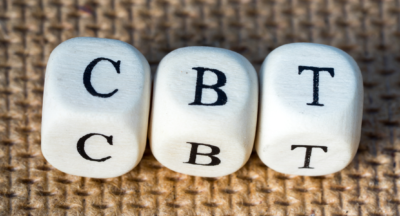
Understanding Conduct Disorder Spectrum According to DSM-5-TR
What is Diagnostic and Statistical Manual of Mental Disorders-5-TR?
The Diagnostic and Statistical Manual of Mental Disorders-5-TR (DSM-5-TR) is a comprehensive guide published by the American Psychiatric Association (APA) that provides standardized criteria for the diagnosis and classification of mental disorders. It serves as a vital resource for healthcare professionals, researchers, and clinicians in understanding and identifying various mental health conditions.
Definition of Conduct Disorder Spectrum as per DSM-5-TR
Conduct Disorder is a mental health condition characterized by a persistent pattern of behavior that violates the basic rights of others or societal norms. It typically manifests in childhood or adolescence and can have significant social, emotional, and academic consequences.
Symptoms of Conduct Disorder Spectrum as per DSM-5-TR
The DSM-5-TR outlines several symptoms and behaviors that are commonly associated with Conduct Disorder Spectrum. These may include:
- Aggression towards people or animals
- Destruction of property
- Deceitfulness or theft
- Violation of rules or laws
- Lack of empathy or remorse
Diagnostic Classification of Conduct Disorder Spectrum as per DSM-5-TR
The DSM-5-TR classifies Conduct Disorder Spectrum under the category of Disruptive, Impulse-Control, and Conduct Disorders. This category also includes other related disorders such as Oppositional Defiant Disorder and Intermittent Explosive Disorder.
Diagnostic Criteria Sets for Conduct Disorder Spectrum as per DSM-5-TR
The DSM-5-TR provides specific diagnostic criteria sets that must be met for a diagnosis of Conduct Disorder Spectrum. These criteria include:
- Repetitive and persistent pattern of behavior that violates the rights of others or societal norms
- Aggression towards people or animals, destruction of property, deceitfulness or theft, or violation of rules
- The presence of these behaviors for at least 12 months, with at least one symptom present in the past 6 months
- Significant impairment in social, academic, or occupational functioning
- The behaviors are not better explained by another mental disorder or substance use
Subcategories of Conduct Disorder Spectrum
Conduct Disorder Spectrum can be further categorized based on the age of onset and the presence of limited prosocial emotions. The subcategories include:
- Childhood-Onset Type: Symptoms appear before the age of 10
- Adolescent-Onset Type: Symptoms appear at age 10 or later
- Unspecified-Onset Type: Insufficient information to determine the age of onset
- With Limited Prosocial Emotions: Presence of callous and unemotional traits, such as lack of guilt or empathy
Conclusion
Understanding Conduct Disorder Spectrum is crucial for accurate diagnosis and effective treatment. The DSM-5-TR provides a comprehensive framework for clinicians to assess and classify this mental health condition. By recognizing the symptoms, following the diagnostic criteria, and considering the subcategories, healthcare professionals can provide appropriate interventions and support to individuals with Conduct Disorder Spectrum.
Related Posts
Understanding Cognitive Behavioral Therapy (CBT) Principles
https://www.youtube.com/watch?v=cLYRV29mflM What is CBT? Cognitive Behavioral...
Understanding DBT: Distress Tolerance and Effective Coping Strategies
Introduction to DBT DBT, which stands for Dialectical Behavior Therapy, is a...
Understanding Cognitive Behavioral Therapy (CBT) and the Cognitive Model
https://www.youtube.com/watch?v=fzzZlZVFEdY What is CBT? Cognitive Behavioral...
Understanding the Diagnostic and Statistical Manual of Mental Disorders-5-TR and its Classification of Depression
Introduction The Diagnostic and Statistical Manual of Mental Disorders-5-TR...




Hare Krishna,
Personality disorders are characterized by enduring patterns of thoughts, emotions and behavior that deviate from the cultural expectations and cause impairment in functioning.
Personality disorders are classified into clusters a,b&c. Cluster A personality disorders include those with odd or eccentric behavior like paranoid,schizoid and schizotypal personality disorder
Cluster B includes those disorders which exhibit intense and unpredictable emotions, engage in impulsive behavior like antisocial, histrionic, narcissistic and borderline.
Cluster C includes those disorders which display high levels of anxiety, fear of rejection or abandonment like avoidant,dependant and obsessive compulsive personality disorder.
Hare Krishna,
Autism spectrum disorder is characterized by persistent deficits in social communication, social interaction across multiple contexts as well as restricted repetitive patterns of behavior, interests or activities.
Symptoms of ASD as per DSM5TR are:1)delayed or absent speech 2)Restricted and repetitive behavior such as repetitive movements like hand flapping 3)Hypersensitivity or Hyposensitivity to sensory input like being over or under sensitive to light, sounds, textures or taste.
According to levels of severity ASD is classified into level 1,2&3.